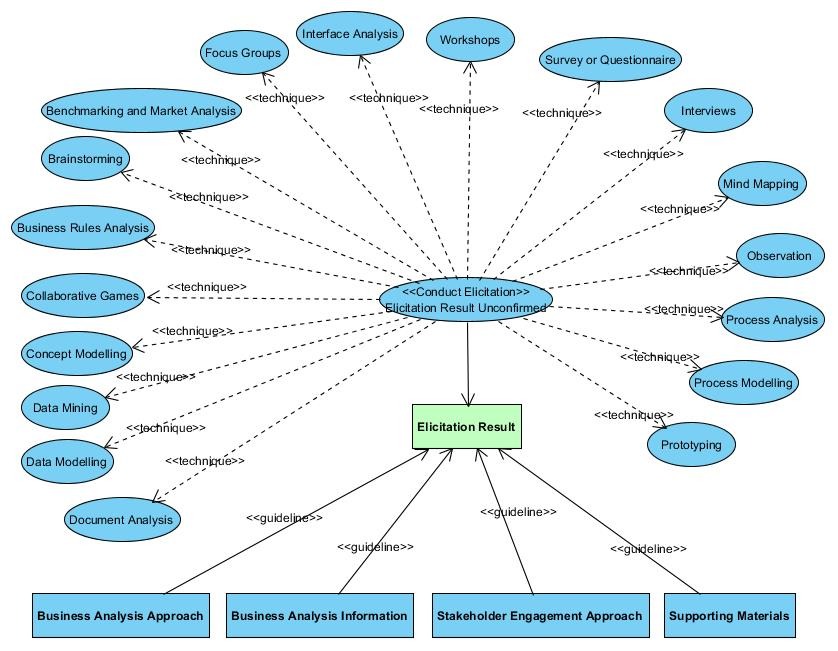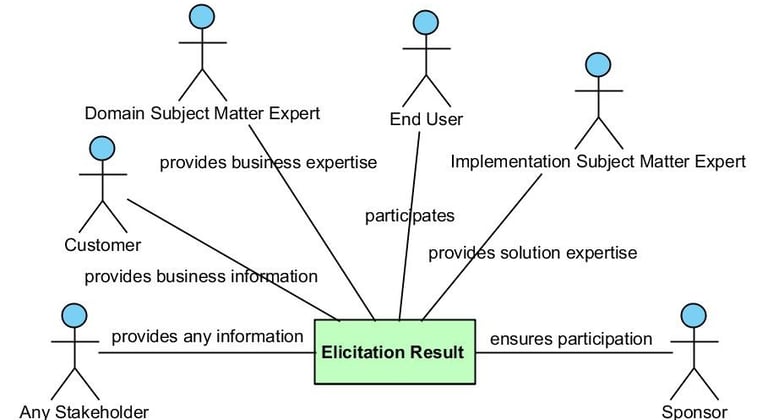Conduct Elicitation
The purpose is to explore, identify and document current state information that is going to change as part of the project.
Guidelines/Tools and Techniques
The guidelines/tools and techniques used to Preform The Task.


Conduct Elicitation - Uses Benchmarking and Market Analysis, Brainstorming, Business Rules Analysis, Collaborative Games, Concept Modeling, Data Mining, Data Modeling, Document Analysis, Focus Groups, Interviews, Mind Mapping, Observation, Process Analysis, Process Modeling, Prototyping, Surveys and Questionnaires, and Workshop techniques to elicit relevant business information.
Elicitation Results – Use the Business Analysis Approach, Business Analysis Information, the Stakeholder Engagement Approach and Supporting Material as guidelines.
The relationships between these guidelines, tools, techniques and Elicitation Results are detailed in the BABOK under the Guidelines and Tools and Techniques sections of the Conduct Elicitation task.
Workers
The people involved with conducting elicitation.


The relationships between these roles and Elicitation Results are detailed in the BABOK under the Stakeholders section of the Conduct Elicitation task.
Any Stakeholder - could have relevant knowledge or experience to participate in elicitation activities.
Customer - will provide valuable business analysis information during elicitation.
Domain Subject Matter Expert - has expertise in some aspect of the situation and can provide the required business analysis information. Often guides and assists the business analyst in identifying appropriate research sources, and may help to arrange research, experiments, and
End User - Participates in elicitation.
Implementation Subject Matter Expert - Provides solution expertise during elicitation.
Sponsor - Ensures the necessary stakeholders participate in elicitation.